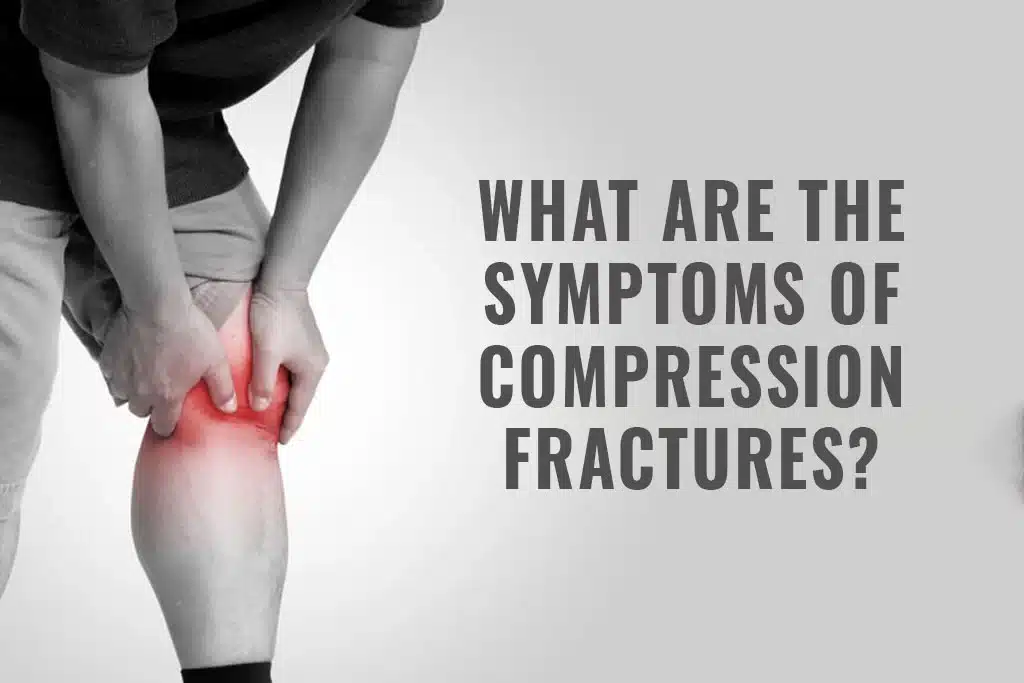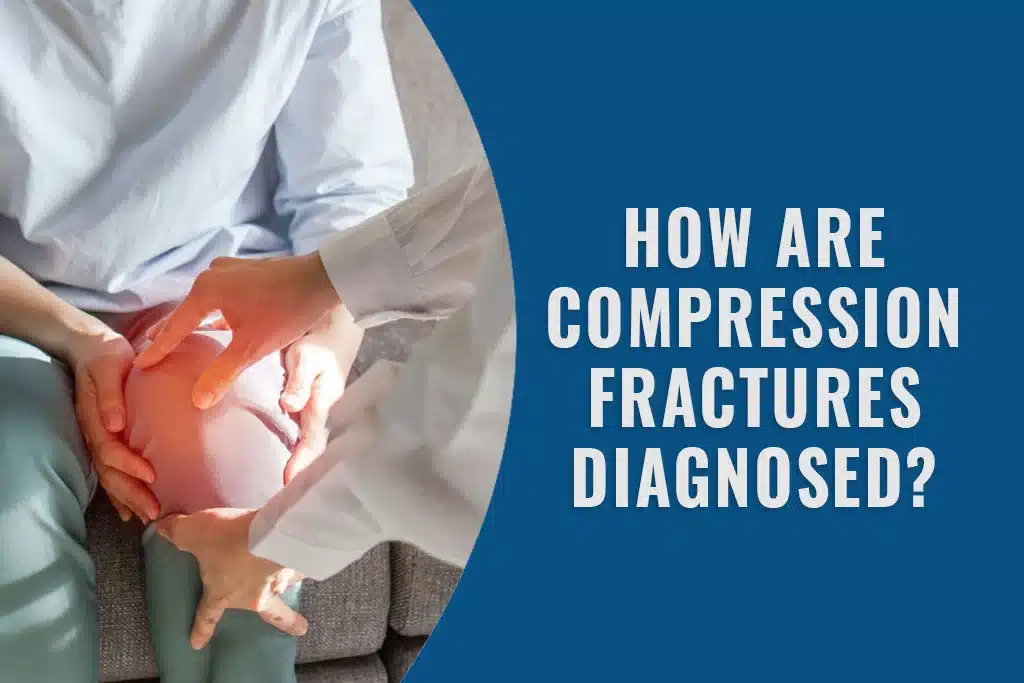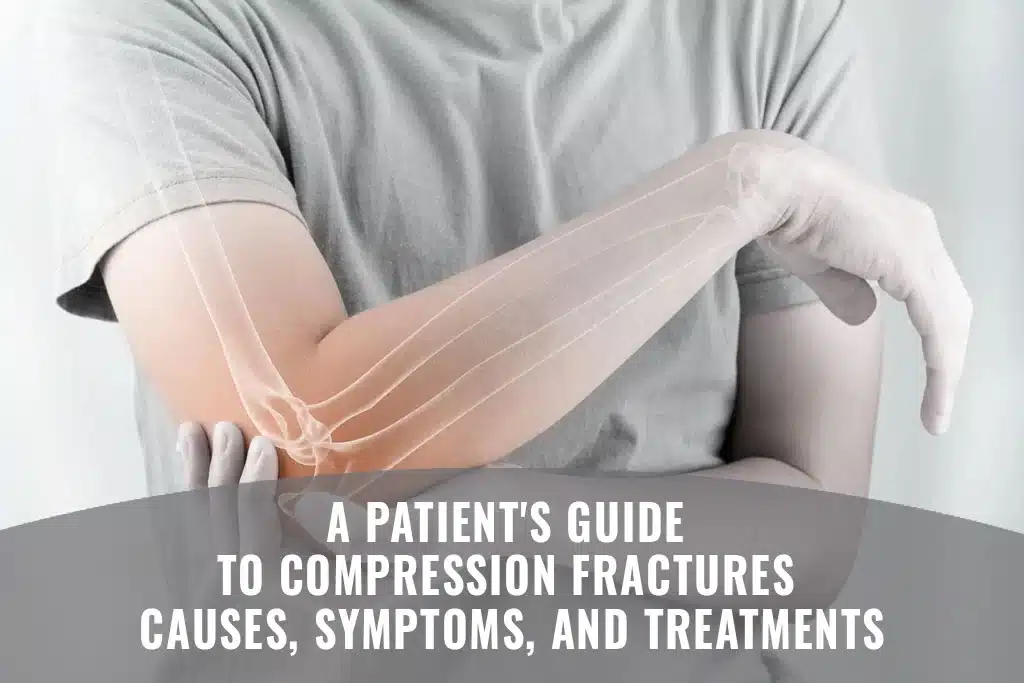Have you ever considered the ripple effect of compression fractures? Find out with us how it can compromise the stability of your spine and your general well-being. The broken part due to the loss of a bit of the bone at the site of the fracture on your vertebrae is referred to as a compression fracture. These vertebrae are the bones that make up your spine. Women over 50 appear more than others in these communities. At ER of Watauga, we employ the best team of expert orthopedic surgeons with years of experience in the relevant field.
It can be a difficult task to continue to develop and maintain a strong musculoskeletal system as we get older and often develop osteoporosis. At last, it’s the spine that is pushed forward and curves down, broken pieces of vertebrae at their base. Braces, medications, rest, and even surgery meant for minimal invasion are all devices used in a complete plan. In this article, we will help you know the symptoms, causes, and treatment strategies for compression fractures.
What is a compression fracture?
Compression fractures may involve slightly broken or chipped bone within the vertebrae (the concatenation of hard bone pieces that make up the spinal column). The bulky, rounded area at the front tip of each vertebra (articulated by the cortex), also known as the vertebral body, is the area where breaks occur. Bones in the spine wear down and break leading to column weakness and collapse. from English Patterns of misalignment created by these fractures eventually distort overall posture. The -centered is becoming by a forward-lying of the spine (kyphosis).
The thoracic (middle) vertebrae are often the ones to fracture, and therefore the lower part of the thoracic region is likely to be impacted. Besides, medical professionals may use the abbreviations VCFs or vertebral compression fractures. In contrast to this sentence, having the same meaning, the above sentence introduces abbreviations for VCFs and vertebral compression fractures in addition to the definition provided by physicians.
Osteoporosis is precipitating the cases. Such benign tumors may be accompanied by malformations of the spine or head injuries (for example, severe auto accidents). Physicians, depending on the situation, utilize osteoporotic drugs, as well as certain special kinds of braces to treat compression fractures. Some patients may require an operation to be cautious and stabilize the spine.
How common are compression fractures?
Fractures are quite common and almost any of them are compression-like. Approximately in the US, there are 1 million compression fractures every year. It ( Osteoporosis) decreases bone quality and has an additive effect that increases the risk of compression fractures. Osteoporosis occurs more frequently in elderly women. They are also discouraging the younger cohort through older individuals.
Resulting from the medical staff stated that about 25% of women over the age of 50 experience one or even several vertebral compression fractures. These play a more significant role in women who have postmenopausal deprivation. It is estimated that 50% of cognizant older people aged 80+ have a compression fracture.
Compression deformity vs fracture
A compression deformity and a fracture are related but distinct terms used in the context of bone injuries:
Compression Deformity: This term in a nutshell stands for compensation in bone shape or structure due to forces that try to compress them. Analyzing the spine might be a gradual process in which the bone shape changes or is flattened without a fracture curve line. While it is usually connected with bone conditions as mentioned, osteoporosis, wherein the bones become less dense and subsequently break under normal pressure.
Fracture: A breach is when there is an interruption in the continuity of the bone. When talking about the spinal column “compression fractures” bring about a bone collapse in the spinal column as a result of the weakening of one or more bones in the column which may be responsible for back pain, fallen height, and a chest forward position. Compression fractures result from osteoporosis, trauma, or cancer that occurs in either the vertebrae of the backbone or in the vertebrae themselves.
Although compression deformity does not always include an acute fracture, compression fractures are confinement of the vertebrae body and an eventual necrotic deformity. For that, it is necessary to receive a comprehensive evaluation from a health professional and follow a therapeutic regimen to avoid the development of more symptoms and the progression of the disease. If you require more detailed information or have what medical professionals call physician-determined needs, you should consult a doctor instead.
What are the symptoms of compression fractures?

Symptoms of compression fractures may not be very noticeable or even extremely painful. Some individuals manifest these symptoms free of traces, while others can be symptomless with the same symptoms. In case your primary doctor conducted an X-ray examination with a different problem in mind, he/she might be able still to spot a fracture. Also while standing or walking, pain will be experienced. The following are signs of a fractured spine:
- The ability of chronic low back pain to be severe and persistent causes the pain to be really challenging. It may appear at any point in this mentioned region which covers the lower back to the shoulders. A patient usually experiences pain when they walk. This makes the pain worse. However, once they lie down, the pain gets better.
- Reduced mobility of the spine or a loss of the arc of motion; can occur. It may be that you are out of position to be able to overstretched one way or another.
- Manifestation of what is known as a dowager’s hump; a condition where one tends to appear stooped and hunchback.
- The person’s back curves down and the vertebrae become compressed – shortening height.
- While walking is difficult, it can bring a tingle and numbness to the nerves; therefore, crushed and nerve injury can happen too.
- Chronic urine incontinence (symptoms of this condition may also appear when the fracture is not treated timely).
Compression fracture in lower back
Compression fractures in the area of the lower back occur when the supporting vertebrae in the lumbar spine break. Disc herniation, on the other hand, is defined by the crumbling of the vertebral body which, consequently, causes a lowering of the height of the spinal column. Fractures, such as those of the wrist or arm, usually occur in older people who have osteoporosis, which weakens the bones and leads to their susceptibility to the stress of everyday routine or a gentle fall.
What causes compression fractures?
Disorders of the bones, particularly Osteoporosis and its complications such as spinal fractures, are the leading cause of compression fractures. In the process of growing older, the bones naturally repair or get rid of old bone molecules. The spine on the other hand develops an increased number of moved and flattered vertebral discs. The strength of the bone would be of great importance because the incidence of fractures increases significantly in weaker bones.
Fractures are expected to be compression fractures or any other similar kind of event arising from a fall or other related event that may occur if you have moderate osteoporosis. A simple incident, like cracking a bone in the teenage years, may lead to the development of serious osteoporosis during the senior years. These experiences fall under the category of repetitive activities and include coughing, sneezing, twisting the back abruptly, and exiting the vehicle.
Vertebral compression fractures in younger persons or non-osteoporotic-aged individuals are normally due to foreign bodies (for example, after a car accident) or cancer. Primary tumors are capable of metastasis contributing to spinal canal, vertebrae osteoporosis, and fracture of the bones.
How are compression fractures diagnosed?

Expert physicians at our facility will do an exam on you and make a conversation to find out the symptoms of compression fractures. At the examination, your provider:
- Detects and analyzes your spine’s tilt and placements.
- To find the sensitive place, touch with gentle pressure different places on your body.
To view pictures of struts, ships, and other soft elements of your back, your physician may also request a physical examination along with the imaging tests. Among these imaging investigations are:
- For instance, to diagnose issues with your bones like fractures and others, take Spine X-rays (also known as Computed Tomography Scan/CAT OR MRI).
- A special kind of X-ray for determining the loss of bone is called a Dual-energy X-ray absorptiometry (DEXA) or (a bone densitometry test).
- Besides that, your physician will sponsor you for an additional myelogram after the imaging study. Before: the doctor, will inject a dye or a CT scan contrast materials, into your spine. Dyes are involved in the formation of much clearer images.
- A multiple-phase bone investigation is a medical examination that entails obtaining a series of images in three stages using three separate sessions.
Compression fracture treatment
The objectives of compression fracture treatment are not only to alleviate pain and secure the spine’s stability for favorable healing. They also include preventing other fractures. Treatment options could include the following, depending on the extent of the fracture and your general health:
- Medication for pain: Besides, health providers can recommend buying non-steroidal anti-inflammatory drugs (NSAIDs) sold over the counter if you need them. If these treatments do not bring adequate relief, doctors might suggest prescription medicines or muscle spasms medication.
- Braces: Back problems arise due to the misalignment of your vertebrae. As an example, you can supplement your vertebra with a certain type of back brace. Another important benefit of yoga is that it allows your body to reduce the movement of your spine and therefore eliminates pain.
- Bone-strengthening medications: Referred to as bisphosphonates, these drugs have a dual function; besides slowing down bone loss, they also help hold the bones together and therefore prevent fractures. Among these medications are alendronic acid and ibandronic acid, which are the most commonly used treatments.
Kyphoplasty and vertebroplasty are cleverly constructed procedures that cannot only improve mobility but also reduce pain and provide further stability for the bones. As the treatment is known as vertebroplasty a needle is used on the vertebrae to inject bone cement. A cement-loaded inflatable bladder is positioned to act as a pillar during kyphoplasty. On the day of discharge, you are likely to be given a routine of pain relievers along with an exercise and diet plan.
Best way to sleep with a compression fracture

Consider placing a cushion in a place where you have no pockets on your knees when lying on your back. You will do one less favor to your back by doing this. A different choice is to sleep on one side with a pillow separated between your concave knees, typically one or both. To those who prefer to sleep on their stomach, it’ll be doing well to place your pillow below your waist region.
Can I prevent compression fractures?
Very likely compression fractures can not be prevented in all cases. To lower your chance of suffering an osteoporosis-related compression fracture, you ought to:
- Profitably, no binge consumption.
- You must regularly take meals with the right calorie check and enough calcium and vitamin D to build stronger bones.
- Leave this tobacco usage, including smoking, causes bones to weaken, and thus the possibility of getting cancer is increasing )
- Experts recommend to undergo regular bone density evaluation if you have risk factors for osteoporosis, to delay the loss of bone mineral by following doctor’s recommendations and using your medications.
When should I see my healthcare provider about compression fractures?
Go to your physician if your back pain that is not related to a particular movement/event persists for more than a day or two. You need to get yourself evaluated for back pain at the hands of a doctor so this way, the underlying reason gets identified and an effective treatment method is formulated. If you have osteoporosis, have cancer, or are less than 65, you better inform your physician as soon as possible.
Life expectancy after compression fracture
After the compression fractures, the lifetime may depend on the personal`s health, the size of the fracture, and the treatment. It also affects the recovery. However, the fracture itself might not be the reason for the destruction of lifespan, but the things that are connected indirectly with that, such as less mobility, chronic pain, and the high chance of coming back to the hospital, might start to influence our overall health and wellbeing.
Long-term effects of spinal compression fracture
Back pain is the most frequent side effect and it lasts for a long time in patients with spinal compression fractures. This pain can be present only in the injured vertebrae or maybe it can be felt over the whole back as well. This is how pain does spread during muscle strains. As a result, it can happen slowly or dramatically over hours or days. Being in a lying down position assists the pain part but walking standing or twisting irritates the pain.
Conclusion
The most frequent cause of compression fractures is osteoporosis, which is a bone disease that makes bones fragile. You get older while the odds stack up on breaking a bone of this sort. You can prevent yourself from the problem of compression by having a nutritious diet, thence, more amount of calcium and vitamin D, and by going to the doctor regularly. See your doctor if you are over 50 years old and risk osteoporosis to prevent bone loss. Also, have a bone density test if you meet these criteria.
If you get serious back pain at a point in time, get checked by your doctor. To avoid a delayed healing in the case of a compression fracture follow the instructions and directions as your health care provider explains them. ER of Watauga is an around-the-clock working emergency room offering decent orthopedic care and reliable diagnostic tests. Contact us now to book an appointment or to get further information.
FAQs
Which factors frequently lead to compression fractures?
The vertebra compression fractures can be brought forth by trauma from an accident or fall, or by certain medical conditions like osteoporosis, cancer, and spinal tumors that result in vertebral atrophy.
What signs of a compression fracture are present?
General symptoms could be sudden back pain, loss of height or spine problems, reduced movement, and in extreme cases, damage to nerves by numbness or tingling, and weakness in the legs.
How are fractures from compression identified?
Majorly, the diagnosis process is done through a thorough physical examination, history-taking, and imaging scan of the X-ray, MRI, and CT. They are comprehensive enough to confirm the presence and the extent of the fracture.
What options are there for treating compression fractures?
Treatment may involve bed rest, pain-killing medications, splinting applied to stabilize the spine, and physical therapy where the primary aim is to strengthen muscles and improve mobility. Sometimes minimally invasive procedures or surgery are conducted to prevent the spine from moving forward and pressing the nerves that are diseased will.






